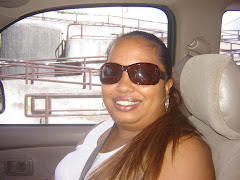1. What is DNA? -->the Blueprint of Life, DeoxyriboNucleic Acid
2. What are the 4 bases? -->A, T, C, and G. A stands for Adenine, T for Thymine, C for Cytosine and G for Guanine.
3. What 2 peices of information did the scientists need to solve the elusive structure of DNA?-->They needed to know that the phosphate backbone was on the outside with bases on the inside; another that the molecule was a double helix.
4. What are the specific base pairs? -->Adenine & Thymine. Guanine and Cytosine.
5. How does the pairing rule effect the shape and structure of DNA? -->When the bases are paired, each rung of the twisted ladder in the helix would be of equal length, and the sugar-phosphate backbone would be smooth.
6. What does the DNA do during cell division? -->During cell division, the DNA molecule is able to "unzip" into two pieces. One new molecule is formed from each half-ladder, and due to the specific pairing this gives rise to two identical daughter copies from each parent molecule. 7. How many base pairs does E. Coli have? How long does it take to replicate? How is the DNA packaged in the cell? -->It is made up of 4 million base pairs and could divide into two cells once every 20 minutes. In order to fit into the cell, it is curled up in a condensed fashion. 8. How many base pairs does Human DNA have? How long does it take to replicate? How is the DNA packaged in the cell?-->It makes 3 billion pairs in about 12 - 24 hours. It is packaged in 23 distinct chromosome pairs.*****
1. What is RNA? How different is it from DNA?
-->the Blueprint Copy, RiboNucleic Acid. Unlike the double stranded DNA, RNA is only made up of a single strand.
2. How are the RNA messages formed?
-->Codons, (three letters from the RNA molecule grouped together) are placed after each other in the RNA molecule to construct a message.
3. How are the RNA messages interpreted?
-->Every RNA word, corresponds to one single amino acid. These codons and their correlation with the amino acids in a protein sequence is what defines the genetic code.
*****
1. Describe the cell cycle.
--> The cell cycle is the orderly sequence of events that occurs from the time a cell divides to form two daughter cells to the time those daughter cells divide again.
2. What is nuclear division.
--> The division of the nucleus and genetic information into more than one cell from a parent cell, usually through mitosis or meiosis.
3. What is interphase.
--> When the cell or nucleus is not in mitosis.
4. Cytokinesis.
--> The cytoplasm divides and two identical daughter cells come forth.
5. Homologous chromosomes.
--> A pair of similar but not identical chromosomes identified as paternal and maternal.
6. Phases of mitosis (5 of them).
--> Interphase, Metaphase, Anaphase, Telophase, Cytokinesis
7. Phases of meiosis and how it is different from mitosis.
--> Early prophase, Late prophase, Metaphase, Anaphase, Telophase, Second Telophase. Meiosis starts out the same as mitosis, but then it splits again after the first cytokinesis to form more chromosome.8. Describe the process and purpose of crossing over.--> Crossing over occurs when the sperm and egg chromosomes pair up and swap genetic information, reducing the number of chromosomes to a complete set. It is important because it makes the number of chromosomes the normal number and also allows the genetic information to remain present in the cell.
WeLcOmE tO mY bLoG...

- lynn
- san antonio, saipan, Northern Mariana Islands
- HaFa AdAi, my name is Lynette, but prefer to be called "LYNN". A student at Northern Marianas College, pursuing three degrees in three major fields of study. Elementary Education (BA), Criminal Justice (AA), and Liberal Arts (AA). Moreover, I am a happily married wife to my loving, supportive and hardworking husband, "Raymond". Whereas, I am also a loving and supportive mother to my two beautiful and outrageous daughters named "Raynalynn" and "Lynnaray". In life, I like to spend quality time with families and friends. I enjoy shopping and eating. I am a person who is very enthusiastic and mostly optimistic. I also enjoy helping others and meeting new people as well. Therefore, if you want to know more about me you can hit me up at lynnsablan@yahoo.com or search me on myspace, hehehe. AdIoS, ginen guahu.
Thursday, November 01, 2007
Subscribe to:
Posts (Atom)
circle of friends
My circle of friends rock marine biology. I love you all for your support and friendship.
Two of my good friends just peacing out after our lab activity @ Obyan beach. You both are one in many great friends that I have. I love you both for your enduring friendship.
Just a few of the marine biology family having ice cream after a long hike at Mt. LauLau. Thank you Frances for the treat and thanks to ice cream for cooling our body heat down.